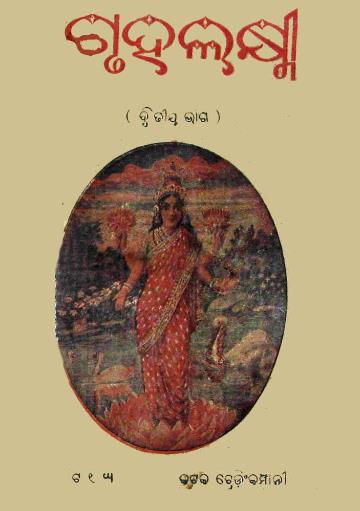Published in 1946, Gruhalaksmi Part-2 by Jagabandhu Simha is a remarkable extension of its predecessor, continuing to explore the dynamics of household life through engaging dialogues that capture the complexities faced by women in Odia society. This book not only reflects the shifting roles of women but also highlights the ongoing evolution of family structures and cultural values during a time of significant social change.
In Gruhalaksmi Part-2, Simha employs the same dialogue-driven narrative style that characterized the first volume, allowing readers to immerse themselves in the authentic voices of his characters. The dialogue format creates an intimate atmosphere, enabling a deeper understanding of the characters’ thoughts and feelings. This conversational approach resonates with readers, making the issues addressed feel immediate and relevant.
Simha’s vibrant use of the Odia language, rich with idiomatic expressions, enhances the emotional depth of the dialogues. The characters speak with a naturalness that reflects everyday life, making their experiences resonate with the audience. This stylistic choice not only aids in storytelling but also preserves the cultural authenticity of the Odia language.
One of the central themes of Gruhalaksmi Part-2 is the empowerment of women in the domestic sphere. The dialogues shed light on the challenges women face as they assert their identities and seek education, independence, and agency. The book illustrates the gradual shift in societal attitudes towards women’s roles, portraying characters who are increasingly determined to break free from traditional constraints.
Simha also emphasizes the importance of education, highlighting how knowledge can serve as a catalyst for change. Various conversations among characters reflect the transformative impact of education on women’s lives, encouraging them to pursue their goals and contribute meaningfully to society. This theme is particularly significant in the context of post-independence India, where the empowerment of women became a focal point for social reform.
Another essential theme is the nature of family dynamics and the importance of communication and support within households. The dialogues explore both conflict and resolution among family members, illustrating how love and understanding can help overcome misunderstandings and strengthen relationships. Simha skillfully portrays the differing perspectives of male and female characters, providing a balanced view of domestic life.
Through various scenarios, readers witness how the bonds of family are tested and reinforced, emphasizing the need for compassion and cooperation. The dialogues serve as reminders that a successful household relies on the mutual respect and collaboration of all its members, underscoring the idea that harmony results from collective effort.
Gruhalaksmi Part-2 serves as a cultural document that captures the ethos of Odisha in the 1940s. It reflects the changing landscape of Indian society, where post-war realities influenced traditional structures. Simha masterfully integrates cultural references and daily practices into the narrative, allowing readers to gain insight into the rituals and values that shape Odia life.
This cultural immersion not only enriches the reader’s experience but also highlights the importance of preserving and celebrating regional heritage. Simha’s work becomes a vehicle for understanding both the particularities of Odia culture and the broader struggles faced by women in society.
Books Info
| Books name | Gruhalaksmi Part-2 / ଗୃହଲକ୍ଷ୍ମୀ |
| Author | Jagabandhu Simha |
| No Of pages | 243 |
| Publisher | Pandit Sri Akul Mishra |
| Publication | 1946 |
| Printed At | NA |
| Distributor | NA |

